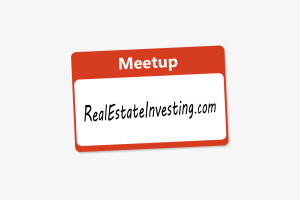4 Key Points to Using Private Money for Real Estate Investing
I keep a list of blog posts on my phone. Every time I get an idea, I write it down so I can revisit it at a later date. I started this private money blog post over a year ago. But since I just interviewed Matt Faircloth on my podcast about his new book: Raising Private Capital, I felt encouraged to finish it.
So what is a private lender? Well, it could be anybody: your aunt, mother, friends, or a gym buddy at the YMCA. All they have to do is have money to lend and be willing to lend it.
Unfortunately, most people know about investing their money in the stock market, 401ks, and CD’s, but they don’t know that they can use the same money to invest in real estate. However, once they realize that their investment is secured by the asset and covered under an insurance policy, the idea of becoming a private lender is a great scenario.
As an investor, you will get to a point when you need a boost of capital to grow your real estate investments. Since 2012, I have borrowed money from banks, hard money lenders, and private lenders to fund my deals. I can tell you that my favorite has been private money.
The information below is based on a combination of my personal experience and education through blog posts and books I’ve read. My goal is to provide you with an educational view on private lenders, the benefits, how to find them, and some practical guidelines when you borrow funds.
Part 1: Overview of Private Loan Benefits
Part 2: How to find Private Lenders
Part 3: What to bring to a meeting
Part 4: Cardinal rules
Overview of Private Loan Benefits
The biggest benefit is that you can underwrite your own deals, determining the loan amount, rate, and terms. There is a lot of responsibly that comes along with this, so it would be wise to create a track record first and be able to show people that you will be a good steward of their money.
Typically, when you borrow from a bank, there will be a set of underwriting guidelines. This is to protect the bank’s investment, but it is a positive thing for you as well. When you first start out, you may let emotions get the best of you. I know I did. This underwriting forces you to protect their money, which should be the ultimate goal. But it also keeps your investment in check as well. It protects you. If you know they won’t lend over 70% of the ARV, you know you must write your offer at 70% of the ARV minus the rehab costs plus a construction contingency for overages and surprises.
However, when you underwrite your own deals, there is no need for credit checks, W2’s, tax returns, debt to income ratios, # of properties currently owned, and paperwork upon paperwork that typically comes with an institutional lender. Nor do you have to play the awful waiting game to see if the bank will loan you money, which can drive you crazy when you need to act fast on a good deal.
As the underwriter, you can give your investors options to choose from. For instance, maybe you don’t want to pay monthly interest payments or put 15% down like you would with a bank loan. Instead, you can offer different rates and terms, such as:
- 7% monthly interest payments/no principle pay down OR
- 10% down and I will pay you the balance plus accrued interest at closing?
Just keep in mind, there are no standards. It’s completely up to you and your lender.
Typically with private money lenders, there are no pre-payment penalties, large down payments, monthly interest payments, or points. Today’s typical closing fees for Hard Money include at least 15% down for the total project amount, 2-4 points due at closing, pre-payment if you pay the note off before a certain time, and also another point if you go past a certain date.
Another benefit is that there are no construction draws schedules. With hard money, each drawl schedule will have a cost attached to it. The lender will send an appraiser or inspector out to visit your project to verify if the work has been done. There is a $150-250 fee per each draw. With private money, if you choose, you can get the entire construction budget up front.
I only compare this to hard money because they are an asset-based lender with great speed and “unlimited” capital. Hard money has its place in business. My point is that you want to move from hard money to private money after you have built a track record and have become an expert. It’s like taking the training wheels off your bicycle.
Where to Find Private Lenders
Tell everyone you know about the success you’re having in real estate. For instance, every time I would visit my doctor or other professionals, they would ask me what I’ve been up to.
“Well, we just flipped this house in my hometown. We bought it for $110K and sold it for $195K while making a profit of $23K! Our lender made $14K of profit!”
Then, just see where the conversation goes. Don’t push them about being a lender and start asking for money. Hopefully, their curiosity is piqued, and they will ask you a few questions, which leads to my best line:
“Hey, if we come across another property, should we give you a call first before paying a bank or my hard money lenders?”
Growing up, I had this cousin, Ryan, and he was very good at promoting clubs. Some nights had specials, and they would ask Ryan to help bring people in. For the first couple of months, he would send out a mass text with the details. But his response rate wasn’t that great – he would only get a few responses. He later learned that texting each individual and using their name led to a very high percentage responding.
So before you go blasting out a mass text, think about who might benefit as a private lender and start to develop a relationship. Taking the time up front will pay dividends in the end.
REMEMBER this: You ARE NOT asking for money, you are offering an opportunity.
What To Bring To a Meeting
So, let’s say you set up a meeting to offer an opportunity to an investor. What do you bring to that meeting? A credibility book! And I learned this from my good friends over at Wheelbarrow profits!
This book should include:
- Your bio
- Your company’s bio
- Resume
- Case studies
- Benefits
- Investment strategy/business plan
The goal is simple: to build your reputation as a credible investor. This will, in return, build trust with the private lender.
HINT: Please make sure you have pictures. This may sound silly but it goes a long way. I could talk until I’m blue in the face about numbers, projections, and returns. But some people just love photos that show the before and after product.
Two of My Cardinal Rules
1 Say what you’ll do and do what you say.
2 Protect yourself and your lender by not overextending yourself. Pick an LTV and stick with it. If you go over, it comes out of your pocket.
These cardinal rules allow your lender relationship to be built on TRUST. If you don’t have it or lose it, your reputation will be at stake. And worst of all, you may lose someone’s life savings that they have worked really hard to save all those years. My best advice is this: Be true to yourself, understand investing principles, be a good steward of money, persevere, and align your interests with your investor interests.









6 comments
Great content! There is definitely an abundance of opportunity for both lenders and borrowers in private lending!